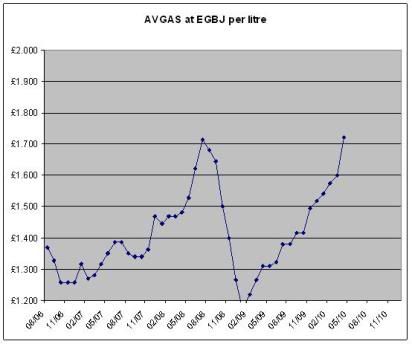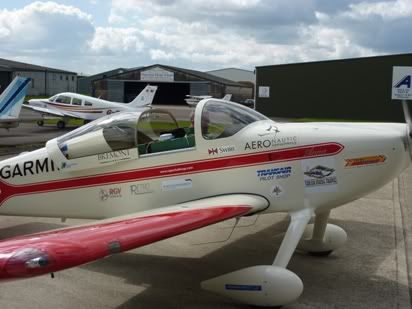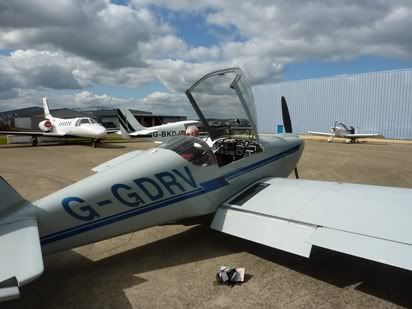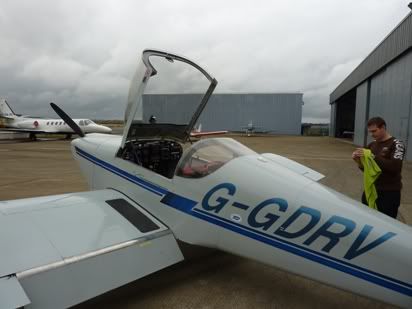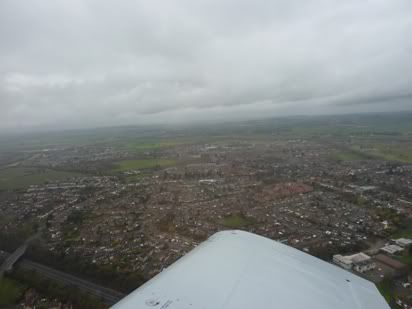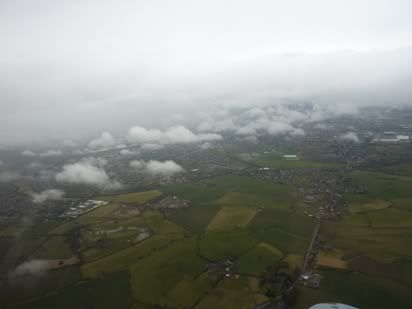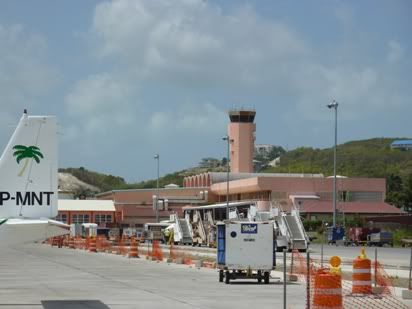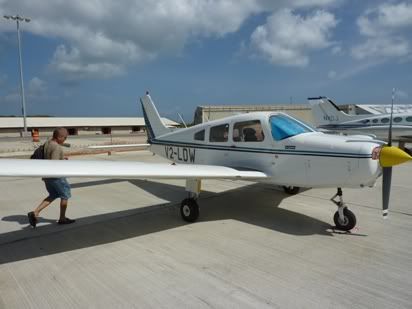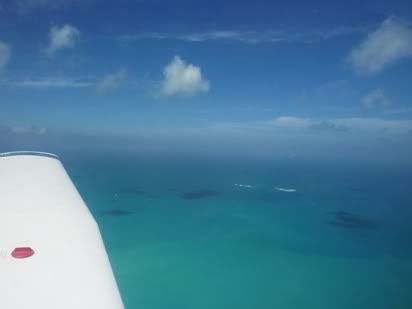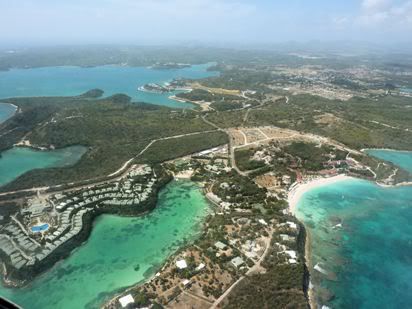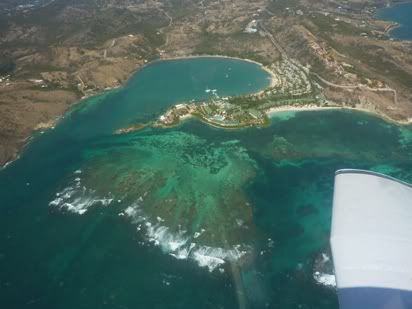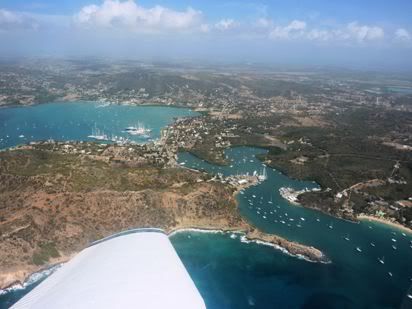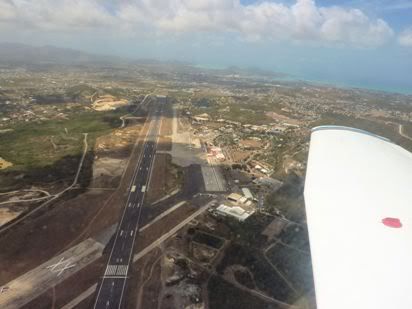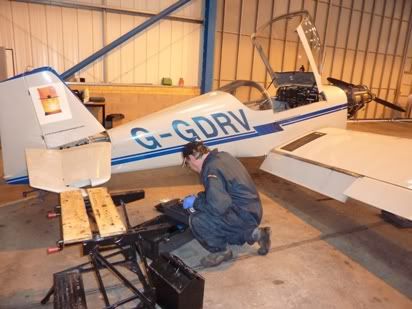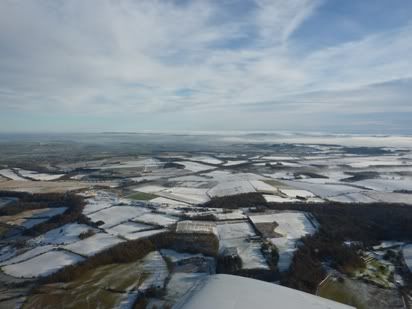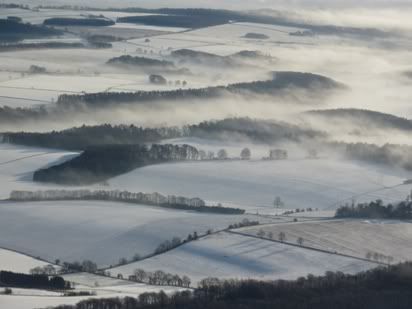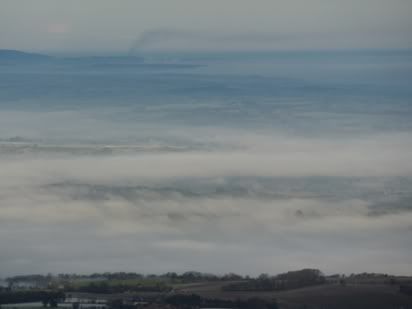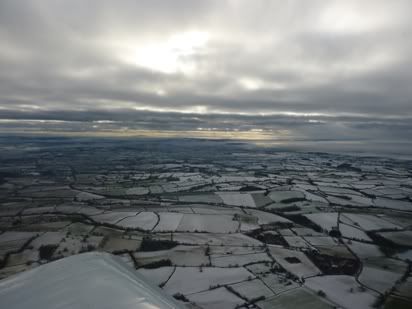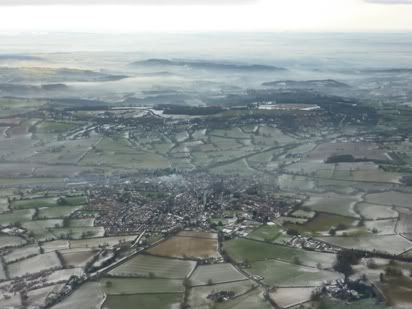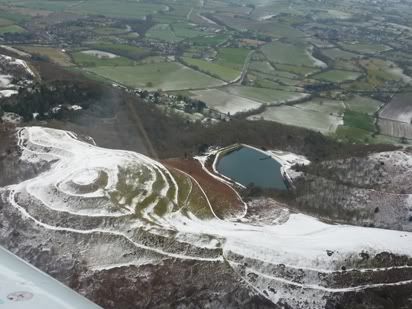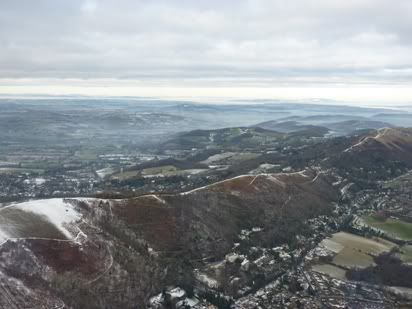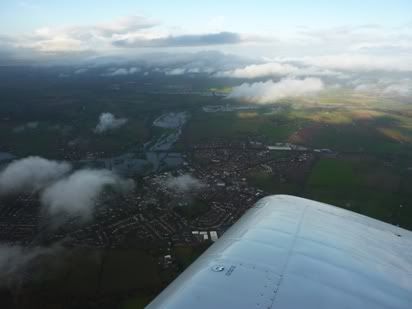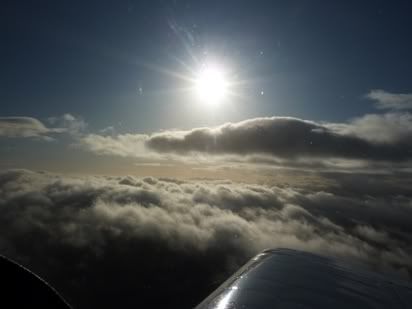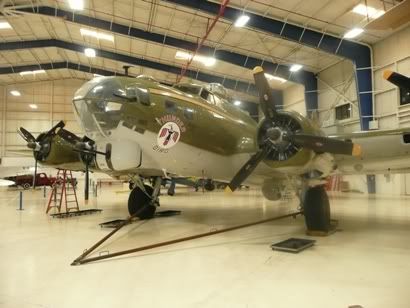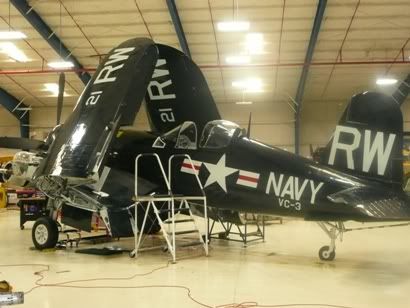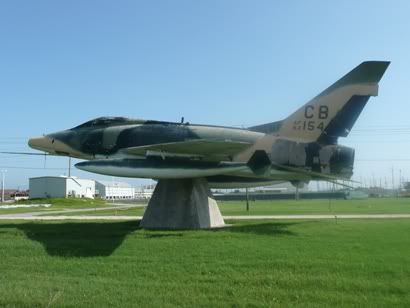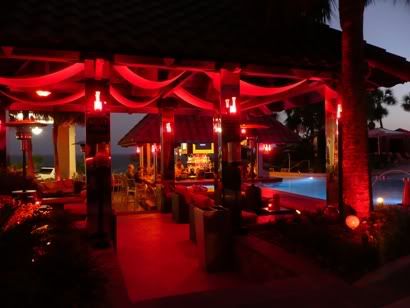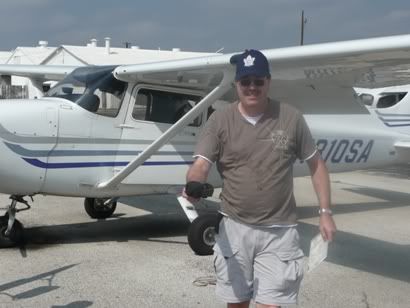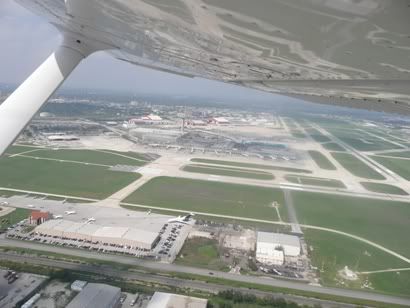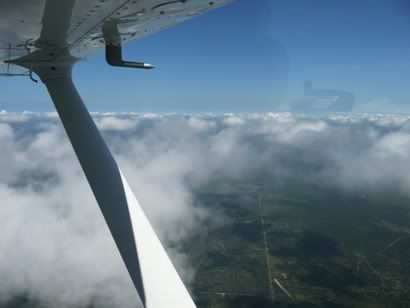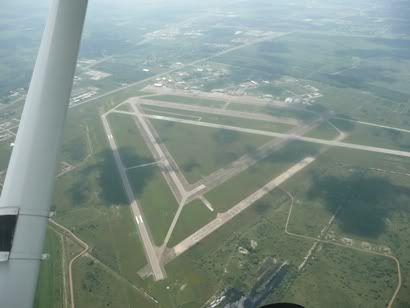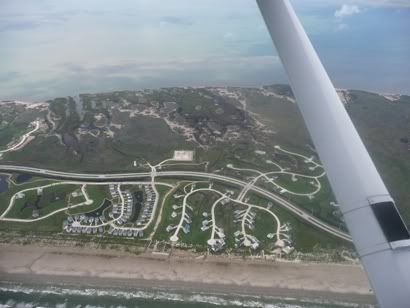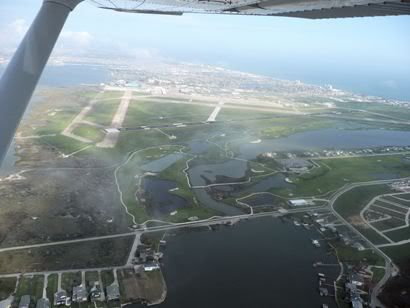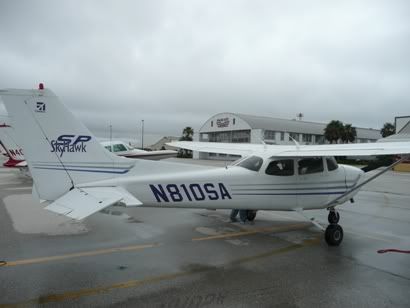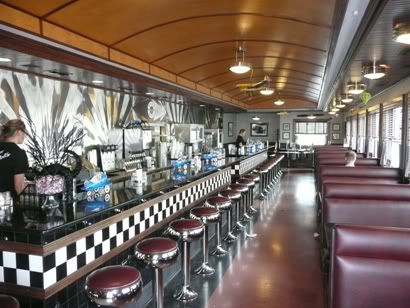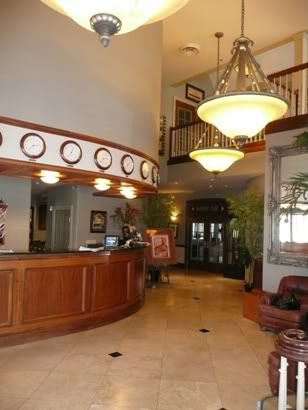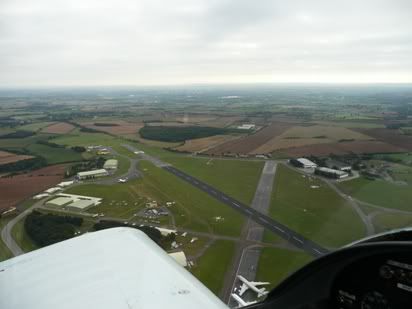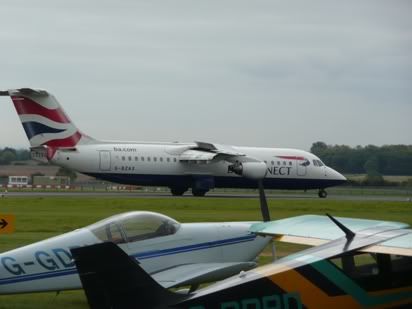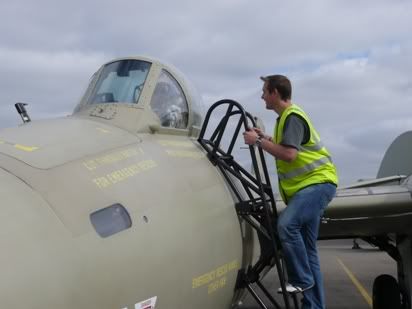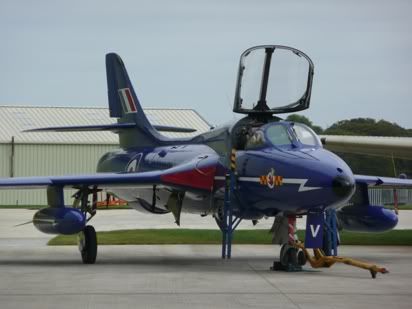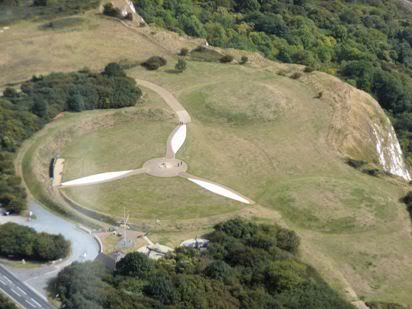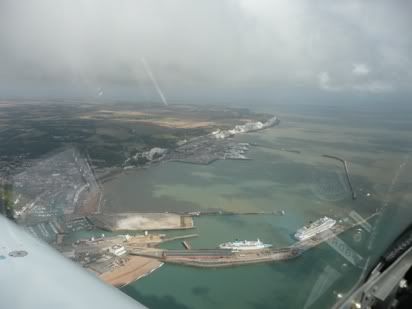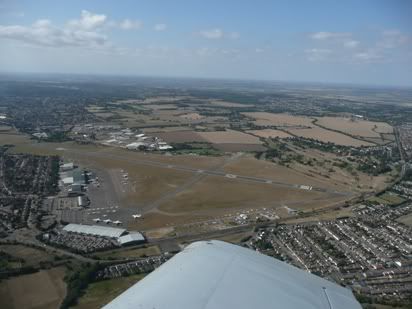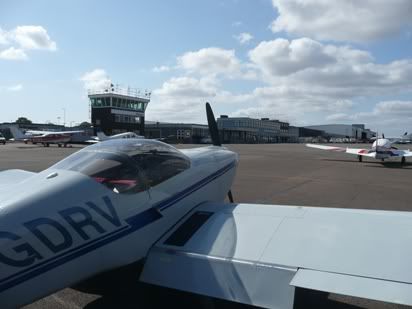What is it with guys, the urge to collect, record and catalogue?
Anyway, as part of this effort, I have decided to ‘fill in’ on airfields that are relatively close and in many cases that I fly over heading to more distant destinations, but for some reason have never visited before. So this time it was Goodwood / Chichester. I always fly direct from Gloucester to GWC VOR on my way to France, so why no drop in there.
I was a little concerned to establish the state of the grass runways, but a few enquiries and a telephone call reassured me that it wasn’t boggy and it was really very smooth. The problem with the RV6 is that the spats are pretty tightly cowled and there is not a lot of clearance with the ground, so it wouldn’t take much to crunch them up and possibly at worst tip the machine onto it’s nose. The clincher was when they said they had a couple of RV’s based there and they were flying quite happily with spats on.
Saturday looked on the face of it to be an ideal day. I had checked the NOTAM’s of course and the weather was forecast to be sunny with minimal wind. So it was, but it was a sort of ‘high-pressure’ murky. I couldn’t see the Malverns from the end of my road (my personal ‘Malverns Test’), but the vis was OK, I could see that I was going to get a ‘goldfish bowl’ type view downwards until and unless I got on top of the haze layer.
Rob joined me for the trip and we pulled the plane out carefully past the Citation parked in the middle of the hangar, carefully getting the RV wing under the higher wing on the Citation.
We departed on runway 27 with a bit of a crosswind, then turned left onto track climbing to 3800’ as we crossed the Cotswold ridge. I contacted Brize Zone for a basic service as I was above their zone, but thought I had better speak to them anyway. Fairford was ‘cold’ (I already knew that) and South Cerney and Redlands Farm were meatbombing (as usual). So I routed close to Fairford overhead to avoid the parachuting. I was vaguely hoping for some sudden engine rough-running as it would be a hoot to do a PFL at Fairford, but no, not today!
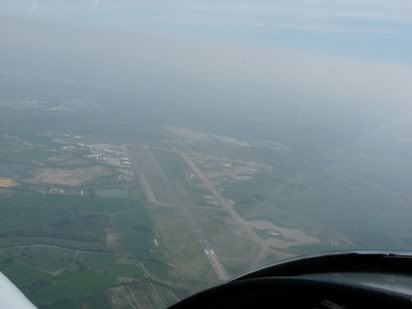
It was murky alright. Certainly VFR, just claggy. It would have been clear of the haze layer at probably 5500’ or so, but there was no point in that as I would start to hit Category A airspace and upset people, so I carried on at 3800’ for the 45 minute trip to Goodwood.
I do find grass airfields hard to spot, but as I have been over Goodwood so many time, I know where it is, even then, I was only certain I had it with 4 miles to run. I did a standard overhead join for the main runway, 14. There was only one other aircraft in the circuit as I lined up on final.
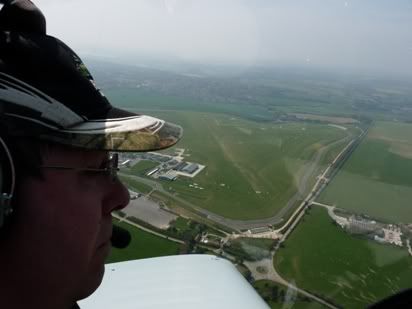
I deliberately wanted to land long partly to avoid any ruts just past the numbers where most aircraft would normally land and partly to avoid a long taxi on the runway to the clubhouse and parking at the far end of 14. I managed this and pulled off a nice landing (grass is flattering anyway of course). I trundled slowly to line 2 as requested and parked up.
It was warm, the sun was shining and there is nothing quite like a grass airfield on a day like this. A member of Flyer Forum suggested I dropped in on him in Hangar 8 and checked out the interesting aircraft. So I had a chat with someone in the hangar and looked over a lovely Harvard and a black Stearman.
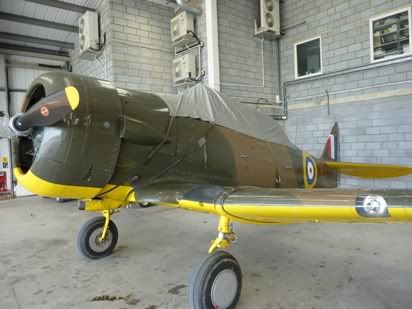
We wandered into the Aero Club and paid the somewhat hefty £17.50 landing fee. There is an excellent cafe and we ordered a couple of baguettes and drinks out on the patio overlooking the airfield watching interesting aircraft come and go in the sun – what a wonderful way of passing an hour or so as a Harvard, a Chipmunk and a Wilga all made their way skyward.
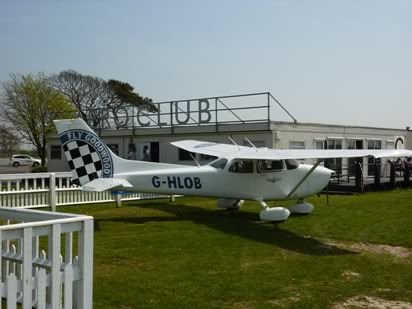
Of course, Goodwood isn’t just an airfield, it is also a motor racing circuit, using the old peri-track around the airfield, so after we spotted a few cars bombing around the circuit, time for a look. On the way out of the aero club, we spotted a statue of one of the original characters of the airfield, none other than Douglas Bader, who took off from this airfield on his last mission of the war as he was shot down over France.

There was a fabulous line up of Ferrari’s as a string of Lotus 7’s came in from their timed lap. Just to wander around the Ferrari’s and hear them as they started up waqs such a treat. We wandered over to the stands and watched as Ferrari’s and Lotus 7’s set off one at a time for a timed lap, the noise was joyous!
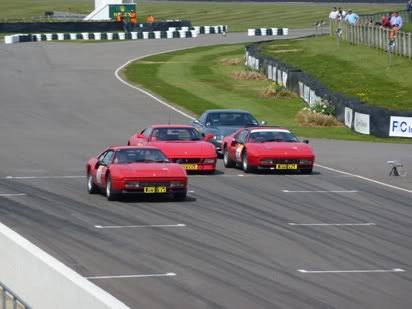
This really is a ‘happening’ airfield with loads to see and do and I was starting to feel a little more charitable about the landing fee. But time to head back. A quick check of the plane as I watched another aircraft taxi out to the hold, it was not obvious where I was going to taxi, so I was relieved at watching a local do it and noting his track. I checked the airport charts as I know they have some interesting noise abatement procedures and I was keen to follow them so as not to upset the locals.
Start up and a slow taxi out to the hold for 14 and power checks. They were fine and I powered up with one stage of flaps trying to get off the ground as soon as practical to minimise any bumps or lumps I might encounter. We were up and once established in the climb, I pulled the first turn to the left to avoid Westhamphnett, then another to avoid another town as we climbed through the downwind, keeping a wary eye on another aircraft joining downwind, we were well ahead of him and climbed up past him keeping him off to the right.
I changed to Farnboro Radar and managed to get a word in edgeways, just. It was still hazy and to help with visibility, I continued my series of occasional but regular weaves to the left and right so I could get a good look forward for other aircraft and hopefully, they would spot my movement if coming straight for me.
Closing in on Popham, I just spotted a high wind aircraft passing probably 100’ below and maybe 200’ to my left, no need for avoiding action, but a bit close for comfort. At the same time, Farnboro called me a quickly reeled off a traffic warning – good job I wasn’t relying on Farnboro alone. I gave Farnboro a quick ‘Visual – Clear’ reply. I am certain the other aircraft didn’t spot me at all. He certainly wasn’t talking to Farnboro either.
We carried on and made contact with Brize as I approached the M4. Did my usual route close to Fairford and just over the Brize zone until past Cirencester, then picked up the Gloster ATIS. I said goodbye to Brize who were overloaded and contacted Gloster Approach. Approach and Tower were combined on one frequency, so he was really busy and earning his money. I got my call in and was offered a direct approach to runway 18. I accepted this and called at 5 miles, the again when established on left base. I called final and was cleared to land.
The approach was good, I was aiming to land long-ish again to minimise the time trundling to the end of the runway. There was some crosswind from the right, so I concentrated on right aileron and left rudder in the roundout, what I did do though was a novice error as 18 is so much narrower than the main runways, that the picture fooled me into thinking I was higher than I was and I touched long before I was expecting to. It was gentle stuff fortunately, and it wasn’t so much a bounce as the runway gently and paternally whispering to ‘Now I know you didn’t mean to touch then, do have another try, there’s a good fellow’ – so I did and made the stall warner holler before we touched properly in the correct attitude.
I taxied back and shut down and gently manoeuvred the plane past the Citation into it’s allotted space in the hangar, crouching in the corner like a poor relative at a society wedding with the swanky Citations and other rich boys toyz lording it over us.
Well, it was a really nice day and an excellent airfield, well worth a look and a return visit. Better visibility would have been nice and I can live without the occasional ‘close encounter’, but that’s flying I guess.
Next, who know, let’s try for another ‘first’ airfield – maybe Southampton, Bournemouth, Dunkerswell, Perranporth, Fowlmere etc.
